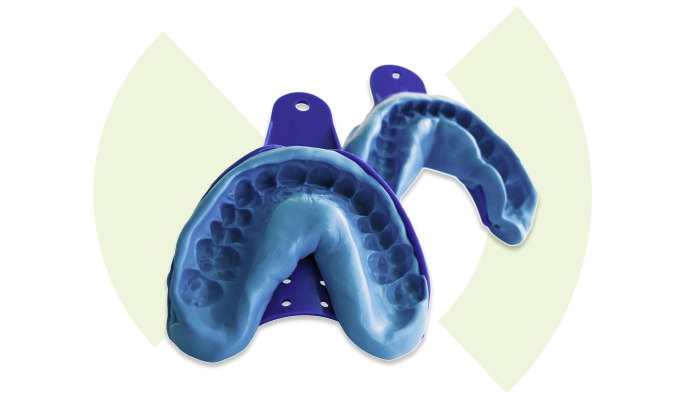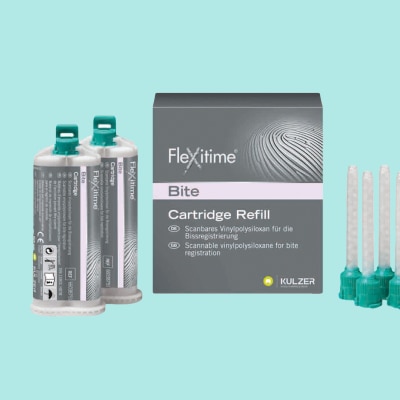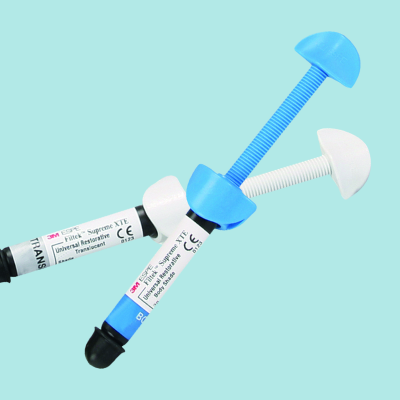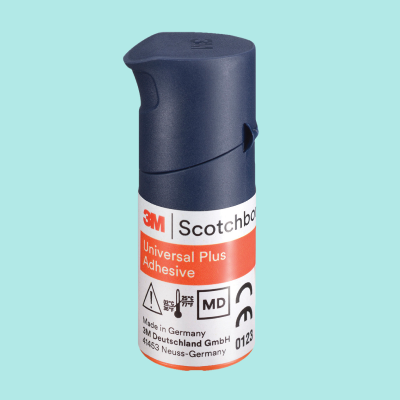How Are Dental Impression Materials Categorised?
The key differentiator between impression materials is whether they are rigid or elastomeric. Rigid impression materials, such as plaster, impression compound and zinc oxide eugenol (ZOE) impression paste, are rigid when set. They offer very little elasticity and cannot record the finest detail. In addition if they are deformed, this deformation will become permanent, so the impressions can be easily damaged. However they have good accuracy, are economically priced, and are easy to use. They are useful in specific situations e.g. for relining partial or full dentures.
Over 90% of the impression materials we sell at Kent Express are elastic materials. These provide an easier flow and tend to be easier to shape. Elastic impression materials can further be broken down into two groups: hydrocolloids (materials which can turn from a liquid state into a semi-solid state depending on the temperature) and synthetic elastomers (polymer-based impression materials which chemically cross-link when setting).
Here are the advantages and disadvantages of our four biggest selling impression materials, to help you make an informed decision about how and when they should be used:
Alginate
The most used impression material, alginate, is an elastic, irreversible hydrocolloid. It comes in a powder form which is mixed with water to form a paste. This paste takes three to four minutes to set.
Pouring with plaster or stone should be done no longer than 10 minutes after setting as alginate is susceptible to imbibition (swelling from absorbing water) and syneresis (shrinking through loss of water) that can distort the impression.
Some alginate materials change color when mixing to help with loading and setting times.

DEHP Alginate Fast Set 500g
Pros:
- Affordable
- Easy to handle and mix
- Good shelf life
- Neutral taste
- Easy to remove from patient’s mouth
Cons:
- Inaccuracy recording finer detail
- Dimension instability
- Poor tear strength
- Must be mixed well to avoid bubbles
- Irreversible- cannot be changed back once set
- Can be messy to work with
C Silicone
C silicone stands for condensation silicone. It is a synthetic elastomer that is mainly used for crowns, bridges, implants and partial dentures.
Condensation silicone can be classified as standard or fast depending on preparation speed. Its consistency can be light bodied (lower filler content and lowest viscosity), normal or heavy/putty (higher filler content, higher viscosity).
C-Silicone is used primarily in a two-step technique which involves 1) the putty impression is recorded with a heavy/medium body material, which provides a good base impression and helps maintain the stability of the impression, 2) once this is set, the impression is relined with a thin layer of light body material, which records the fine detail and increases the accuracy of the final impression.
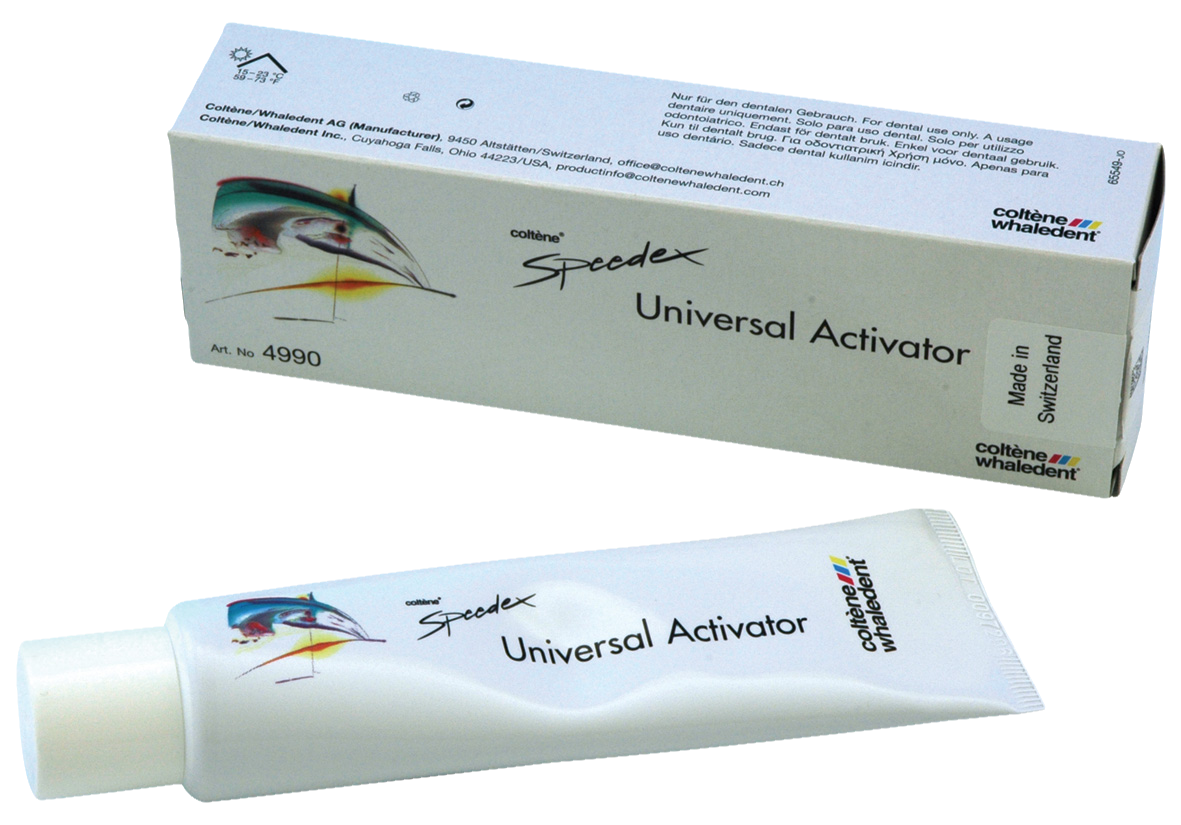
Speedex Universal Activator 60ml
- Generally more accurate than alginate
- Tasteless
- Less messy than alginate
- Good resistance to tearing
- Alcohol by-product can cause shrinkage
- Hydrophobic- requires excellent moisture control
- Higher priced than alginate
A Silicone
The most widely used synthetic elastomer, addition silicone creates no by-products as it sets, which increases the dimensional stability and accuracy of the impression. It offers fine detail recording, sets quickly and has high patient acceptance. It is typically used for crowns, bridges, partial dentures and implants.
Also known as PVS (polyvinyl siloxane) or VPS (vinyl polysiloxane impression material), it can be used in either a one-stage or two-stage paste to paste technique. It comes in several forms ranging from extra light bodied to putty.
A-Silicone keeps its shape for longer than other impression materials and does not have to be poured straight after setting due to its excellent stability.

Cyber Silicone Putty Soft Fast 800g/500ml
- Accurate detail reproduction
- Excellent dimensional stability
- Highly resistant to distortion
- No by-products products during polymerisation (setting)
- High patient acceptance
- Most expensive impression material
- Poor tear resistance
- Temperature sensitive
- Hydrophobic
- Inhibited by sulphur in latex gloves and rubber dams
Polyether
Polyether impression material is again a synthetic elastomer impression material, and comes as a base and activity paste system. It is only used in a single-stage impression technique where the material syringed around the preparation is the same as that used in the impression tray. It is typically used for final impressions for crowns, bridges, partial dentures and implants, in particular where moisture control is a challenge.
As it is hydrophilic, polyether has good dimensional stability and can accurately record different areas of the teeth and mouth. However it can swell in high humidity, so polyether impressions need to be stored dry.
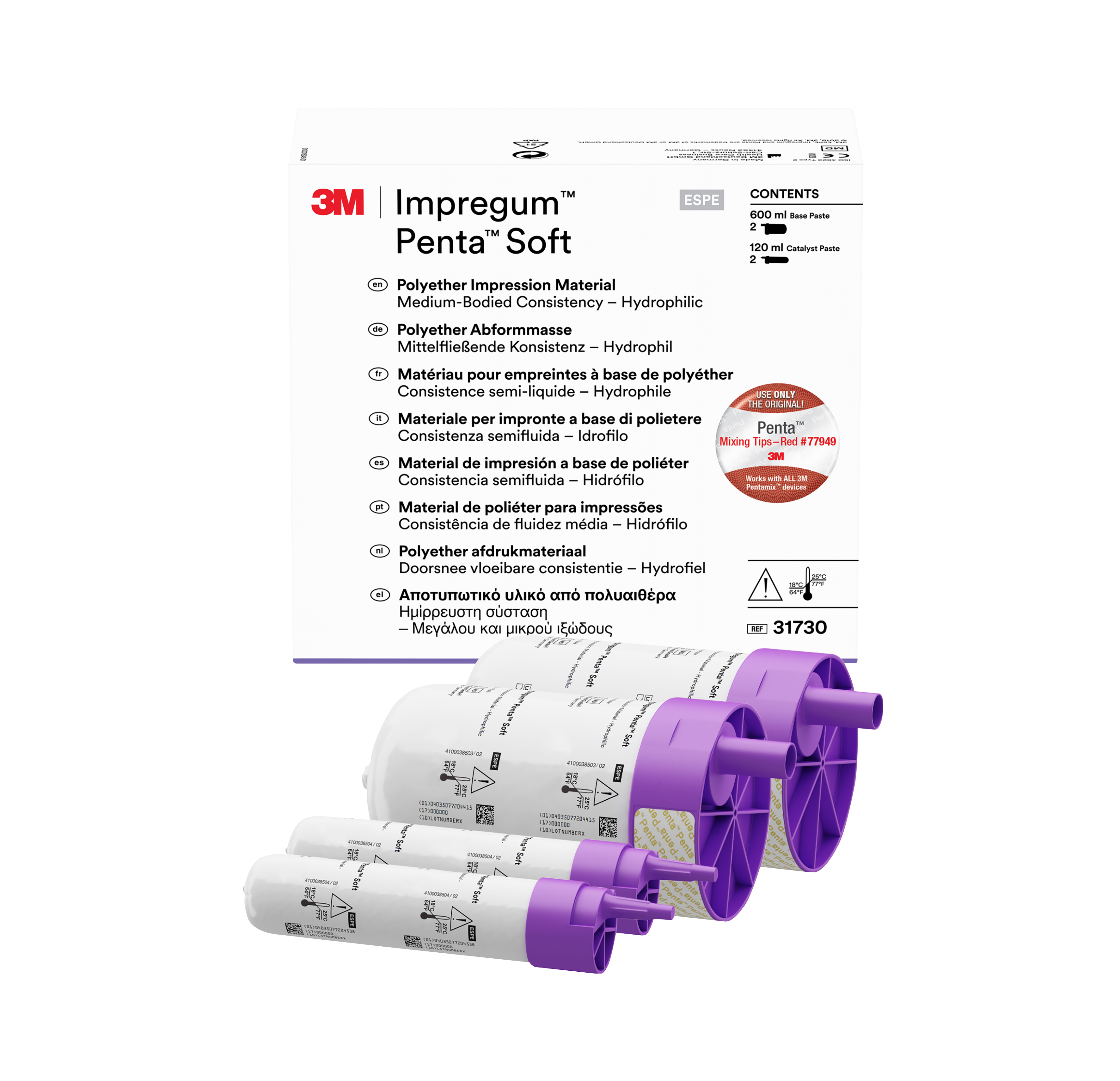
Impregum Penta Refill Pack
- Dimensionally stable
- Most hydrophilic elastomeric impression material
- Low tear strength
- Short working time
- High accuracy
- Very stiff - can be hard to remove from patients mouth once set
- Must be stored dry to avoid swelling
Kent Express offers a wide variety of addition silicone, condensation silicone, alginates and polyether, and all products in stock are available with next working day delivery.
Next Working Day Delivery
Kent Express offers a wide variety of addition silicone, condensation silicone, alginates and polyether, and all products in stock are available with next working day delivery.

Next Working Day Delivery
Kent Express offers a wide variety of addition silicone, condensation silicone, alginates and polyether, and all products in stock are available with next working day delivery.
